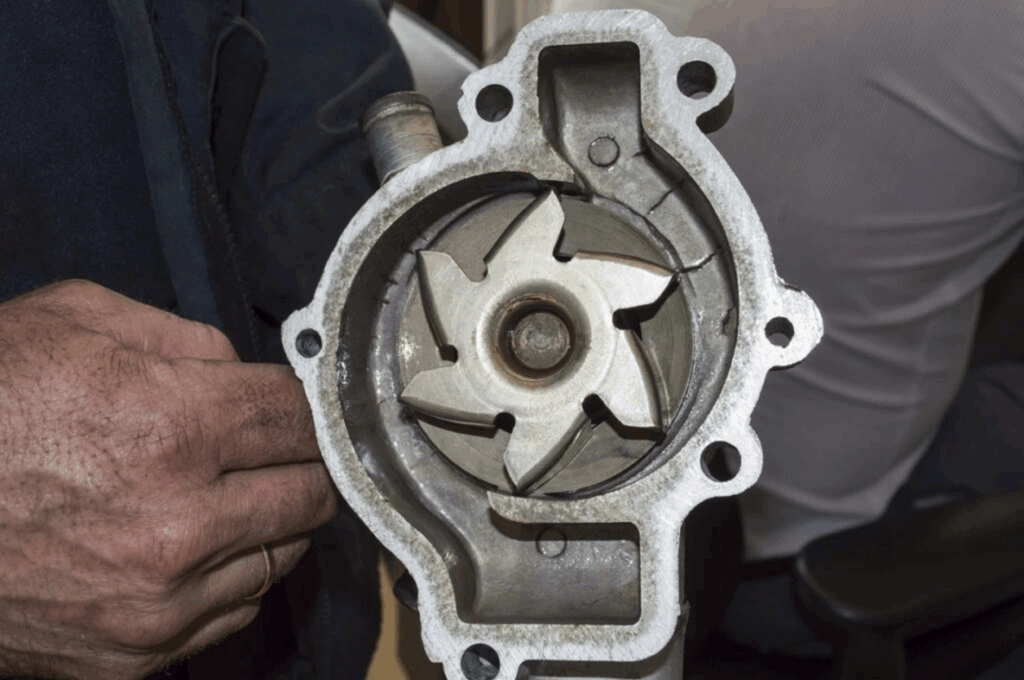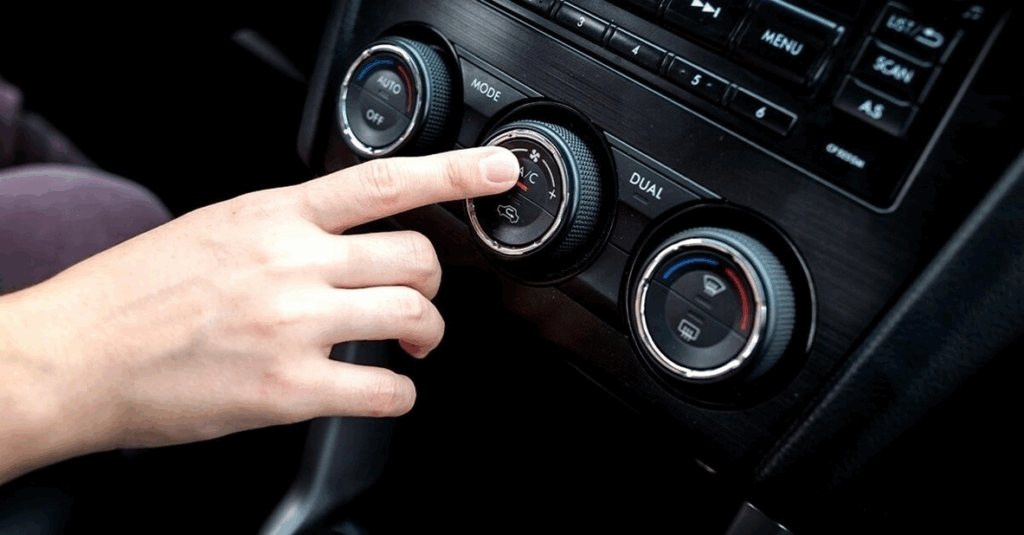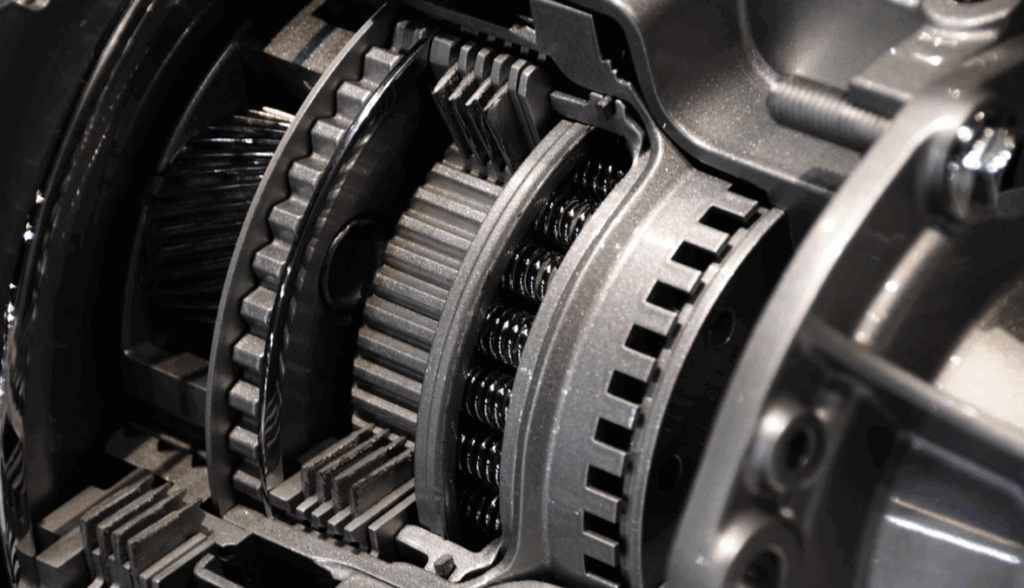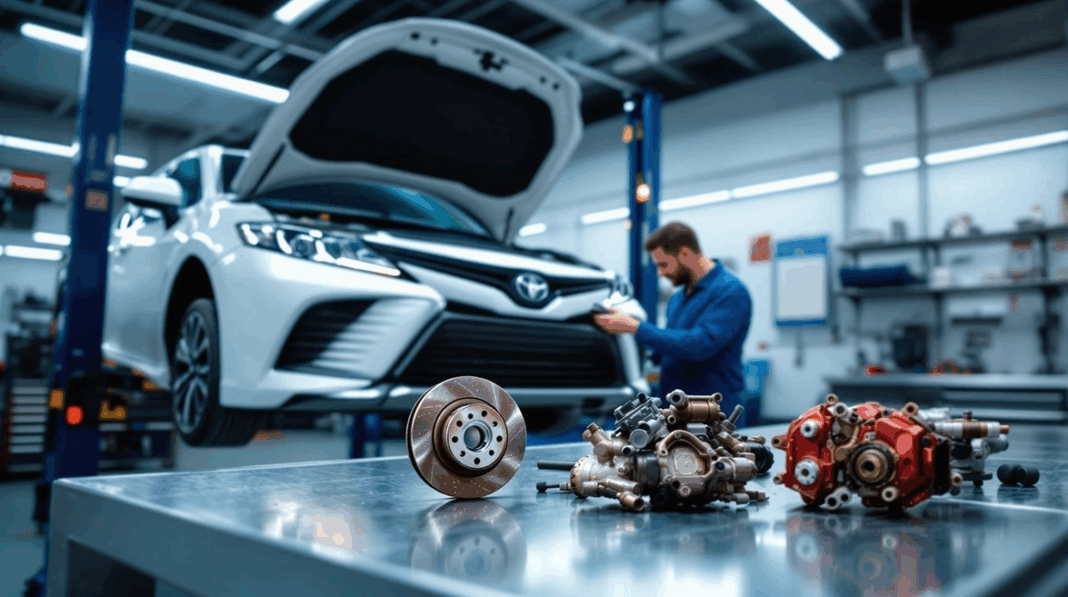Toyota cars in UAE aren’t as perfect as you might think. These vehicles have several recurring problems that owners need to know about, despite their stellar reputation for reliability.
Our research shows that some models like the Camry and RAV4 use too much oil, especially those with the 2.4L 2AZ-FE engine. Many Toyota owners in UAE complain about transmission problems. Older Corolla and Camry models often show signs of rough shifting and delayed engagement. The Highlander and Tacoma models typically face early suspension wear that leads to uncomfortable rides and faster tire wear. A major class action lawsuit hit Toyota in 2007. It covered almost five million vehicles because of oil sludge problems in cars built between 1997 and 2005.
The good news? You can manage these Toyota problems in UAE with proper maintenance and quick repairs. We’ll walk you through the 13 most common Toyota issues in this piece. You’ll learn to spot them early and take action before they turn into expensive repairs.
Brake System Challenges

Brake failures are among the most dangerous Toyota car problems in UAE. Harsh driving conditions can speed up wear and tear. Toyota makes quality vehicles, but their cars still face specific brake system issues that owners need to watch for.
Brake System Challenges in Toyota Cars
Several Toyota models face brake-related challenges. Specific models like the Camry and Corolla experience brake wear faster than expected. The Corolla Cross Hybrid’s brake assist doesn’t work well, especially during turns. Worn brake hoses can deteriorate faster and cause fluid leaks that reduce braking power. Mud or dirt can damage components near the brakes and lead to brake fluid leaks in serious cases.
Common Symptoms of Brake Issues
You can prevent expensive repairs by spotting brake problems early. Listen for squealing or grinding noises when you apply brakes – worn brake pads usually cause this when their thin metal tab touches the rotor. Your Toyota might shake or vibrate during braking because the rotors have uneven spots from too much heat or poor maintenance. The vehicle pulling to one side while braking points to a brake caliper problem that needs quick attention.
A soft or spongy brake pedal often means there’s air in the lines, low fluid levels, or master cylinder problems. The brake pedal sinking to the floor while held down suggests issues with brake pressure from a leak or blown seal in the master cylinder. Hard-to-press brake pedals could mean vacuum hose problems, a bad power booster, or a seized caliper.
How to Fix Toyota Brake Problems
Quick action on brake issues stops further damage. Yearly brake and brake pad checks help catch problems early. Replacing worn brake pads before they damage rotors will save money. Regular checks of brake fluid levels and quality help prevent contamination that weakens braking.
Take your car to an authorized Toyota service center in UAE if you notice any brake symptoms. Their trained technicians know Toyota’s brake systems well and will diagnose and fix the problems correctly.
Suspension System Complications

Toyota car owners in UAE face their biggest headaches with suspension problems. The combination of rough roads and extreme temperatures makes components wear out faster. UAE’s harsh conditions cause Toyota vehicles to lose their smooth ride quality as they age.
Suspension Problems Explained
UAE’s climate takes a toll on Toyota vehicles, causing front struts and anti-roll bars to fail early. Toyota Corolla owners often notice their suspension bushings wearing out too quickly, which creates unwanted movement in the suspension system. RAV4 drivers deal with strut failures that not only make rides uncomfortable but also raise safety concerns during turns. These problems start small but get worse quickly. This is especially true for drivers who often need to deal with speed bumps and poorly maintained roads in certain UAE areas.
Signs of Suspension Wear
You can prevent major damage by spotting suspension issues early. Here are the warning signs to watch for:
Uneven tire wear: Failed suspension parts throw off weight distribution and cause tires to wear unevenly.
Vehicle pulling or drifting: Your Toyota might have suspension issues if it pulls to one side on flat roads.
Excessive bouncing: A healthy car stabilizes quickly after hitting bumps. If yours keeps bouncing, you likely have worn shock absorbers or struts.
Nose diving: Your Toyota’s suspension isn’t balancing properly if the front end dips too much during braking.
Uncomfortable ride: You might have failing suspension damping if you suddenly feel every little bump in the road.
Vehicle leaning: A Toyota that sits lower on one side usually has a broken spring or damaged strut in that corner.
Repair and Maintenance Tips
Your suspension components will last longer with regular maintenance. Get your Toyota’s suspension checked every year, especially before summer hits in UAE. Always choose genuine Toyota parts over aftermarket options – this choice directly affects your ride comfort and how long parts last.
Strange noises from your suspension mean you should replace the mounts, even if they look fine. Toyota experts say you should always replace both struts on the same axle to keep handling balanced. Don’t forget to replace bump stops during strut service – they stop damaging metal-to-metal contact when suspension fully compresses.
Good suspension maintenance gives you a smoother ride and helps your tires last longer. Most importantly, it keeps your Toyota handling safely on UAE’s diverse road conditions.
Water Pump Malfunctions

Toyota owners in the UAE face a serious challenge when their water pumps fail. The scorching desert heat can leave them stranded as this crucial cooling component stops working. UAE’s harsh climate puts extreme stress on cooling systems, which makes water pump problems even more serious.
What Causes Water Pump Failure in Toyota
Your Toyota’s water pump breaks down mainly due to age and regular wear. Miles on the odometer lead to worn internal parts that leak, corrode, and lose efficiency. Dirty coolant poses another big risk – contamination speeds up the corrosion of pump components.
Bad seals also cause pump failures. These parts wear out naturally and let coolant leak, which you’ll spot as puddles under your car. Damaged bearings spell trouble too. You’ll hear grinding sounds and feel vibrations that signal the pump’s about to fail. A poorly done previous repair job can also kill your pump too soon. Badly fitted gaskets and misaligned pumps create leaks and cause overheating.
Overheating Symptoms to Watch For
Toyota owners in the UAE should stay alert for signs of overheating:
- Temperature gage climbing into the red zone shows the first warning
- Coolant pools under your car, mostly near the engine’s front
- Steam or smoke coming from under the hood points to severe overheating
- Strange sounds like grinding noises from the pump area
- Rusty coolant suggests the pump’s breaking down inside
These warning signs need quick action. Your engine could suffer major damage if you keep driving while it’s overheating. The UAE’s extreme heat can make pump problems get worse faster than anywhere else.
Fixing and Replacing the Water Pump
A professional mechanic should handle your water pump problems. They can diagnose and fix issues correctly. Sometimes you’ll need a complete pump replacement, which includes taking out the old unit and putting in a new one with fresh gaskets and seals.
Smart prevention beats expensive repairs. Use the right coolant type, check regularly, and fix small leaks right away to
help your pump last longer. UAE Toyota owners should think about replacing their water pump while changing timing belts around the 100,000 km mark.
Knowledge about water pump issues helps Toyota owners spot problems early. This matters even more in UAE’s tough climate where a working cooling system keeps your car running reliably.
Fuel Pump Failures

Fuel pump reliability is a major concern for Toyota owners in the UAE. High temperatures and varying fuel quality create unique challenges in this region. Toyota’s recent recalls have shown how vulnerable this component can be in several models.
Fuel Pump Issues in UAE
Toyota recalled 46,731 vehicles in the UAE market due to potential fuel pump failures in gas variants. The affected models include the FJ Cruiser, Corolla, Innova, Alphard, Fortuner, Prado, Avanza, Rush, and 86, built between 2013 and 2019. These failures happen because the fuel pump’s impeller gets deformed—a crucial part that keeps fuel pressure stable. The problem is worse in hot regions like the UAE where heat speeds up part deterioration. Unfortunately, many Toyota owners in the UAE report breakdowns in remote areas with limited access to service.
How to Identify Fuel Pump Failure
You can avoid getting stranded on UAE’s highways by spotting fuel pump issues early. Here are the warning signs to watch for:
Engine Stalling: Your car might stall at low speeds or while idling because of uneven fuel flow
Difficulty Starting: The engine cranks but takes time to start, or needs several tries
Performance Problems: The car sputters, hesitates, or loses power during acceleration, particularly at high speeds[164]
Unusual Noises: A high-pitched whine from the fuel tank area means your pump is struggling
Check Engine Light: New Toyota models show warning lights when fuel pressure drops too low[171]
UAE drivers notice these symptoms get worse during summer when temperatures exceed 40°C. The engine’s electronic systems try to fix fuel delivery problems, which leads to rough idling or sudden power changes.
Solutions and Service Recommendations
You need professional diagnosis if you suspect fuel pump problems. Toyota dealerships have special equipment to check fuel pressure and electrical systems. A fuel pump replacement costs between AED 1,000 and AED 4,000 based on your model and service provider. This cost prevents more expensive engine damage that can happen from running with low fuel pressure.
Toyota asks affected vehicle owners to visit authorized dealers right away for free fuel pump replacement under the recall program. You can protect your fuel pump by using quality fuel and keeping your tank above quarter-full to prevent overheating. Regular fuel system checks also help.
Your maintenance schedule should include fuel filter replacement every 30,000 miles. This prevents debris from damaging the pump. Quick action when you notice early warning signs helps you avoid breakdowns and safety risks on UAE roads.
Oil Sludge Build-up

Toyota engines face a deadly “black death” problem. Oil sludge has damaged thousands of vehicles since the late 1990s. This thick, gelatinous substance threatens engine life in the UAE’s extreme climate.
Why Oil Sludge Happens in Toyota Engines
Toyota engines built from 1997 to 2005 often develop oil sludge problems. The 3.0L V6 engine shows these issues most frequently. Toyota settled a class-action lawsuit in 2007 that covered about 2.5 million affected vehicles. High operating temperatures in cylinder heads, poor oil circulation, and faulty baffle system design cause oil drainage problems. The temperature gap between cylinder block (190-210°F) and cylinder heads (260-270°F) creates perfect conditions for sludge to form. Oil moving from the hot head to the cooler block faces temperature differences well above the industry’s standard 10-15°F range, which speeds up sludge formation.
Symptoms of Oil Sludge
Your engine might have sludge build-up if you notice these signs:
Low oil pressure: Thick oil fails to pump properly
Slow oil draining: Oil becomes thick and moves slowly during changes
Power loss: Engine performance drops and fuel consumption rises
Visible sludge: Black jelly-like substance appears under valve covers or oil cap
Hard starting and overheating: Oil circulation problems cause these issues
Knocking sounds: Poor lubrication leads to metal parts hitting each other
Sludge can block filters, oil passages, and pickup screens. This often leads to complete engine failure. Toyota engine rebuilds cost between AED 1,468 and AED 2,937.
Prevention and Cleaning Tips
Synthetic oil helps prevent sludge because it resists breakdown in high temperatures. Change your oil more often than recommended – every 3,000 miles/5,000 kilometers or three months works better than longer intervals. Products like
Seafoam can clean minor sludge from oil lines.
Engines with existing sludge need gentle treatment. Harsh engine flushes might break loose large sludge chunks and cause blockages elsewhere. Short-interval oil changes every 1,000 miles work better to remove buildup gradually.
Unintended Acceleration

Toyota’s unintended acceleration problems sparked worldwide concern and led to one of the biggest recalls in automotive history. Toyota owners worldwide, including those in the UAE, faced this dangerous issue.
Understanding Unintended Acceleration in Toyota
A vehicle speeds up without any driver input during unintended acceleration. Toyota vehicles showed this problem in two ways: brief speed surges or dangerous situations where cars kept accelerating even when drivers hit the brakes. Drivers reported their vehicles wouldn’t slow down after they took their foot off the pedal. The issue caught everyone’s attention after a tragic crash in California in 2009. A Lexus ES350 reached speeds of 100 mph and crashed, killing four people.
Causes and Reported Incidents
Several issues caused Toyota’s acceleration problems. Investigators found two main causes: loose or wrong floor mats that trapped the gas pedal, and accelerator pedals that got stuck partially pressed down. The sticky pedal problem usually got worse over time as the friction device that should give pedal resistance developed too much friction.
Toyota recalled about 3.8 million vehicles in October 2009 to fix the floor mat issue. The company added another 2.3 million vehicles to the recall in January 2010 for the sticky pedal issue. They paid AED 4.41 billion to settle criminal charges after hiding information about these deadly acceleration problems.
How to Prevent and Fix It
Take these steps right away if your Toyota speeds up on its own:
- Press firmly on the brake pedal (do not pump)
- Shift into neutral
- Steer to a safe location and shut off the engine
Toyota fixed these issues by changing accelerator pedals, adding brake override systems, and giving out new floor mats. The brake override system cuts engine power when drivers press both gas and brake pedals at once.
Toyota has developed acceleration suppression technology that uses connected car data to spot unusual accelerator behavior and control speed, even without obstacles nearby.
Air Conditioning Problems

Toyota vehicles’ air conditioners face tough challenges in the UAE. Temperatures soar past 40°C and this is a big deal as it means that cooling systems endure more stress than their original design specifications. The scorching heat pushes these systems to their absolute limits.
AC Issues in UAE Climate
The harsh desert environment wreaks havoc on Toyota AC systems. We observed rapid refrigerant evaporation and deteriorating electrical components. The compressor clutches often get stuck in on or off positions. This causes overheating or complete system failure. A stuck compressor in the “on” position runs continuously until it burns out from stress. The refrigerant systems struggle to handle the massive temperature difference between the outside heat and desired cabin temperature, which results in early component failures.
Common AC Faults and Smells
Toyota owners frequently report musty odors from their AC systems. Toyota has acknowledged this problem through Technical Service Bulletins since 1997. The company attributes these smells to “microbes growing on the evaporator surface”. Bacteria build up as moisture collects in the system. Wet passenger carpets are another frequent complaint, showing a clogged AC drainpipe that traps condensation inside the vehicle.
Additional problems include:
- Road debris and stones damage exposed components, causing refrigerant leaks
- Electrical failures like blown fuses, faulty relays, and damaged wiring
- Clogged condensers reduce the system’s cooling power
Maintenance Tips for Toyota AC
Regular maintenance is a vital part of keeping your AC working properly. Your AC needs weekly runtime, even during cooler months, to maintain proper lubrication. The system needs proper shutdown procedures. Keep the fan running for 1-2 minutes after turning off the AC but before stopping the engine. This prevents moisture buildup that can cause mold.
The cabin air filter needs replacement at scheduled intervals to maximize airflow and minimize contaminants. Bad smells? Try spraying deodorizing products into the external air vents while the system runs – just don’t use recirculate mode. Professional cleaning services with specialized products like BG Frigi-Fresh help eliminate stubborn bacterial growth.
Transmission Problems

Toyota car owners in UAE face transmission problems as one of their biggest challenges. The company has recalled hundreds of thousands of vehicles worldwide. Dubai and Abu Dhabi’s extreme temperatures and stop-and-go traffic create tough conditions for automatic transmissions.
Transmission Issues Overview
Toyota recalled almost 280,000 vehicles (Toyota Tundra, Sequoia, and Lexus LX 600 models) because of a serious transmission defect. Cars roll forward while in neutral when “certain parts of the transmission don’t immediately disengage when shifted to neutral,” which creates major safety risks. Older Corolla and Camry models often have problems with gear slippage and unexpected gear shifts. The CVT transmission troubles affect several models like the Camry, Corolla, Prius, and RAV4.
Gear Shifting and Slipping Symptoms
You can save money on repairs by spotting transmission problems early. Look out for these warning signs:
Unusual noises: Your car makes grinding, whining, or clunking sounds during gear changes
Delayed engagement: You notice a delay when shifting from park to drive
Burning smell: This usually means your transmission fluid is overheating Leaking fluid: You see red or brownish fluid puddles under your vehicle
Check engine light: Modern Toyota vehicles show warning lights for transmission problems
Your car needs immediate attention if you struggle to shift gears or the transmission doesn’t respond to gear changes.
Repair Options and Costs
The cost to fix transmission issues depends on how serious they are. Small repairs range from AED 1,000 to AED 2,500. Major transmission work costs between AED 5,000 and AED 10,000. A complete transmission replacement runs from AED 10,000 to AED 15,000. Regular transmission fluid changes are much cheaper at AED 300 to AED 600.
Regular maintenance remains the most affordable solution. Toyota suggests changing transmission fluid every 60,000 to 100,000 miles. Many specialized workshops across UAE fix Toyota transmissions at better rates than dealerships.
Steering System Faults

Toyota owners in the UAE face most important concerns about their steering reliability. Extreme temperatures and challenging driving conditions can rapidly deteriorate steering systems. These problems can compromise safety and handling even in cars that are known to be dependable.
Steering Problems Explained
Toyota vehicles use two types of steering systems: hydraulic and electric power steering. Hydraulic systems tend to leak as they age. Internal seals under the rubber boots in the steering rack deteriorate over time. The 2004-2010 Toyota Sienna models are prone to steering rack leakage. Electric power steering systems eliminate fluid-related problems but can face motor failures. Newer Prius models often make loud noises during turns. Both systems can suffer from worn rack bushings that let the steering assembly move too much while turning. First-generation Sequoias are known to have bushing failures that make highway handling scary.
Warning Signs of Steering Failure
Early detection of steering problems helps prevent dangerous situations. Vibration or tremors in your steering wheel usually mean you have alignment problems or power steering issues. Your car needs attention if turning becomes hard in either direction – this usually points to empty fluid containers or leaks under your car. The car pulling to one side often means worn steering gear from lack of power steering fluid lubrication. Grinding or screeching noises during turns usually come from loose or worn steering belts that connect the power steering pump to the engine. The biggest problem is excess play in steering – where the wheels don’t respond right away to your inputs. This happens because of loose steering gear, worn ball joints, or loose wheel bearings that create dangerous control issues.
When to Seek Professional Help
You need expert help if steering affects your vehicle’s control. Take your car to a mechanic right away if the steering wheel becomes hard to turn or has too much play. Toyota dealerships check fluid levels, pressure, hoses, and the steering rack to diagnose problems. On top of that, it’s crucial to get immediate help if your power steering warning light comes on because it shows system failure that could cause accidents. Any fluid leaks under your car need professional inspection since power steering systems shouldn’t lose fluid under normal conditions.
Engine Issues

Desert conditions in the UAE create serious engine problems for Toyota owners. The harsh environment and extreme temperature changes put mechanical parts under intense stress. Dust and heat speed up wear on crucial engine components.
Common Engine Problems in Toyota Cars
Several issues keep coming up in Toyota engines. The UAE’s intense heat damages starter motors and battery connections, which leads to starting problems. The 2GR-FE 3.5-liter V6 engine’s water pump tends to fail early. This happens because the gaskets leak rather than mechanical parts breaking down. The 5.7-liter V8 engines that use silicon instead of regular gaskets develop cam tower leaks between 50,000-100,000 miles. You’ll hear strange noises when idler pulleys fail, and these can wreck your engine if you don’t fix them quickly.
Excessive Oil Consumption and Overheating
Oil consumption is a huge headache for Toyota models built from 2006 to 2011. These cars burn through one quart of oil every 1,000-1,500 miles, which can destroy the engine. Toyota admitted this problem in 2011 by releasing a Technical Service Bulletin for cars with the 2AZ-FE engine. Bad thermostats, low coolant, or broken radiator fans often cause engines to overheat. Some Toyota engines oddly overheat only at highway speeds, which points to thermostat issues.
Fixes and Long-Term Solutions
The best way to prevent these problems is regular maintenance. Synthetic oil works better at stopping oil sludge buildup, which really matters in the UAE’s hot weather. Toyota’s service centers suggest changing oil every 5,000 kilometers instead of waiting longer like you might in cooler places. If your engine overheats, pull over right away and let it cool down completely to avoid damage. Your thermostat and water pump should be replaced around 100,000 kilometers, whatever your maintenance history looks like. Watch out for warning signs like weird noises, temperature changes, or leaks – fixing these early saves thousands in repairs.
Oxygen Sensor Failures

“Failures of electrical components such as malfunctioning windows, lights, or infotainment systems can occur due to blown fuses, faulty wiring, or defective components.” — Toyota Electronics Division, Toyota vehicle electronics and infotainment systems team.
Faulty oxygen sensors act as hidden efficiency-killers in many Toyota vehicles across the UAE. The desert heat makes performance issues worse over time. These small, tube-shaped components are a vital part of your vehicle’s proper functioning.
Oxygen Sensor Malfunctions
Oxygen sensors track oxygen levels in exhaust gasses and send this key information to your car’s computer. This helps adjust the air-fuel mixture for the best performance. Modern Toyota models use two to four oxygen sensors based on engine size and exhaust layout. A bad sensor usually triggers your check engine light. You might notice engine misfires, loud noises, or poor powertrain performance. These warning signs need immediate attention because a failing oxygen sensor can damage your catalytic converter – a much more expensive fix. The most common diagnostic trouble codes linked to sensor problems include P2270, P1135, P0420, and P0171.
Impact on Fuel Efficiency
The most obvious sign of a bad oxygen sensor shows up in your fuel economy. EPA data shows that replacing a faulty oxygen sensor can boost fuel efficiency by up to 40%. This happens when the sensor gives wrong oxygen readings, which makes your Toyota either waste fuel by running too rich or lose power by running too lean. Your vehicle might also produce more emissions, which could lead to failed UAE inspection tests. Quick action on symptoms like rough idling, engine hesitation, or starting problems can save money on fuel and protect your emissions control system.
Replacement and Cost
Oxygen sensor replacement costs vary between DIY and professional service options. A single sensor part costs between AED 73.44 and AED 1101.58. Professional installation with parts and labor runs from AED 550.79 to AED 2203.16. Toyota owners should think about replacing oxygen sensors after 60,000 miles or when the vehicle is over 15 years old. Toyota specialists suggest using genuine OEM sensors from Denzo, the actual manufacturer of Toyota’s sensors, instead of cheaper aftermarket options.
Electrical System Problems

“Battery drain, where the battery loses charge quickly, can result from a faulty alternator, parasitic drains from electrical components, or a weak battery.” — Toyota Electrical Systems Department, Toyota vehicle electrical systems division.
Electrical gremlins are the most frustrating Toyota car problems in UAE. They appear without warning and vanish just as mysteriously. The desert heat combined with coastal humidity creates the perfect environment for electrical failures.
Electrical Faults in UAE
Toyota vehicles face several electrical issues while running in UAE’s climate. Batteries fail too early because of extreme heat, making them the most common complaint. Drivers also face alternator problems that demonstrate themselves through dim lights and battery warning signs. A failing starter motor produces clicking sounds as you turn the key. Bad spark plugs can lead to poor engine performance or prevent the car from starting. The heat and constant vibration can loosen fuse box connections, especially in older models.
Power Window and Lock Issues
Toyota’s power windows fail often, following specific patterns. The window regulators that control up and down movement usually stop working after 5-7 years in UAE conditions. Camry and Corolla models seem especially prone to this problem. Windows might slide down on their own or stop closing properly, which suggests either misaligned tracks or failed regulators. Power lock problems usually come from bad actuators or damaged wiring inside door panels. A single blown 30A fuse can affect both systems at once, since Toyota’s design uses it to control power windows, locks, and moonroofs.
How to Diagnose and Repair
You need a systematic approach to diagnose electrical problems. Start by checking the 30A fuse if both power windows and locks stop working. Next, look at the battery’s connections because corrosion causes many random problems.
Listen for motor sounds when you press window switches – no sound means electrical failure, while grinding points to mechanical issues. Window regulator repairs need door panel removal, electrical cable disconnection, and new regulator installation. Complex electrical problems, especially with starter motors or alternators, need professional diagnosis.
Comparison Table
| Problem Type | Main Symptoms | Common Causes | Typical Repair Costs (AED) | Prevention/Solution Tips |
| Brake System | Squealing/grinding noises, vibrations when braking, vehicle pulls to one side | Worn brake pads, damaged brake hoses, fluid leaks | Not mentioned | Annual brake inspections, regular pad replacement |
| Suspension | Uneven tire wear, vehicle pulls, excessive bouncing, rough ride | Front strut failures, worn bushings, anti-roll bar problems | Not mentioned | Annual inspections, replace both struts at once |
| Water Pump | Temperature gage rises, coolant leaks, steam from hood, grinding sounds | Age/wear, coolant contamination, seal failures | Not mentioned | Regular coolant maintenance, replace at 100,000 km |
| Fuel Pump | Engine stalls, hard starting, reduced performance, whining sounds | Impeller damage, heat degradation | 1,000 – 4,000 | Quality fuel use, maintain adequate fuel level |
| Oil Sludge | Low oil pressure, slow oil drain, power loss, engine knocking | High engine temperatures, poor oil flow | 1,468 – 2,937 (engine rebuild) | Use synthetic oil, change oil frequently |
| Transmission | Grinding sounds, delayed shifts, burning odor, fluid leaks | Gear wear, CVT problems, overheating | 5,000 – 15,000 | Regular fluid changes, preventive care |
| Steering | Steering wheel shakes, hard turning, grinding sounds | Worn rack bushings, fluid leaks, motor failure | Not mentioned | Check fluid levels, address warning signs quickly |
| Oxygen Sensor | Check engine light on, poor fuel economy, engine misfires | Age, contamination, heat damage | 550 – 2,203 | Replace at 60,000 miles or 15 years |
| Electrical | Battery drains, power windows fail, starter problems | Heat damage, loose connections, bad regulators | Not mentioned | Regular battery testing, system checks |
Conclusion
Our deep dive into Toyota car problems in the UAE shows that even these reliable vehicles struggle in extreme desert conditions. The intense heat speeds up wear and tear in multiple systems – from brakes and suspension to electrical and cooling parts. Toyota’s reputation for dependability remains strong, but owners need to watch out for these common problems.
The best way to protect your Toyota is through regular maintenance. The UAE’s harsh climate means you’ll need more frequent servicing than what the manufacturer suggests. Watch for warning signs like strange noises, fluid leaks, or changes in performance to stop small issues from becoming expensive repairs.
Each Toyota model has its weak spots. Cars with 2AZ-FE engines (2006-2011) need constant oil level checks. Models from 1997-2005 are prone to oil sludge buildup. UAE summers put extra stress on cooling systems, so water pumps and radiators need special attention.
Problems rarely stay isolated in one system. Electrical issues can mess with everything from your windows to engine performance. Oil sludge doesn’t just hurt one part – it can damage your entire engine. That’s why you need complete vehicle checks instead of fixing one symptom at a time.
Original Toyota parts last longer than aftermarket options, especially for critical components like suspension parts and oxygen sensors. They cost more upfront but give you better performance and durability in tough conditions.
Your best defense against breakdowns and costly repairs is knowledge. UAE drivers can get the most out of their Toyota’s legendary reliability by staying on top of these common issues with proper maintenance and quick fixes when needed.



